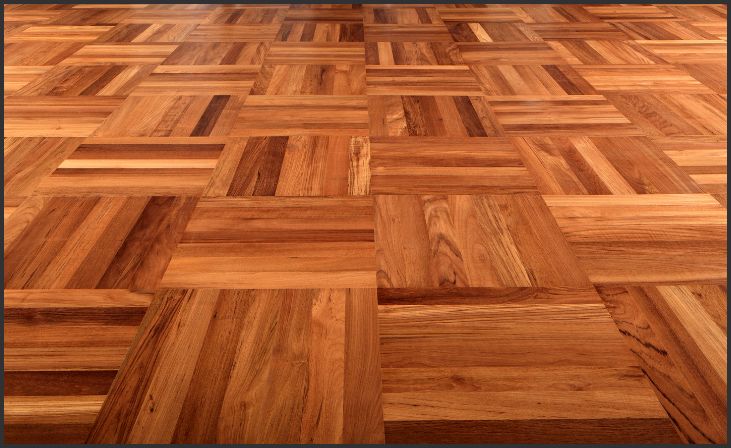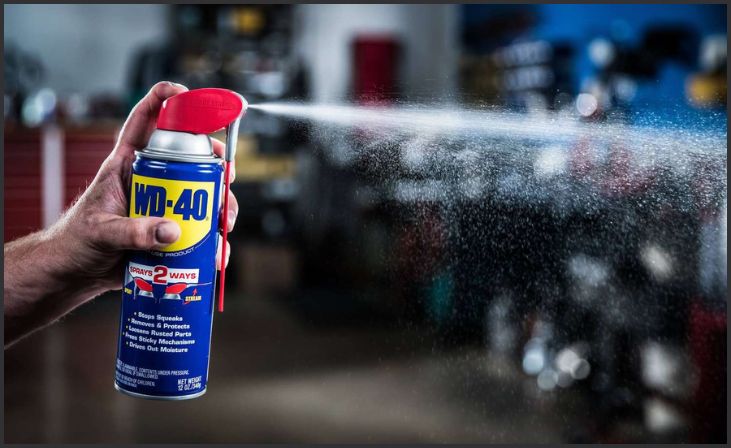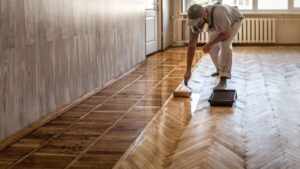Discovering tree sap on your hardwood flooring can be a sticky situation, literally. While hardwood floors offer elegance and warmth to any space, they are vulnerable to various types of stains, including tree sap. Not only can tree sap mar the appearance of your beautiful floors, but if left untreated, it can also penetrate the wood and become more challenging to remove.
Thus, it’s essential to address this issue promptly and effectively. This guide will walk you through the step-by-step process of removing tree sap from hardwood flooring, ensuring that your floors remain pristine and free from unsightly blemishes.
By following these instructions and using simple household supplies, you can restore the natural beauty of your hardwood floors with minimal hassle. So, whether you’ve encountered a small droplet or a larger patch of sap, fear not – with the right approach, you can bid farewell to sticky sap stains and enjoy your gleaming hardwood floors once again.
How To Get Tree Sap Off Hardwood Flooring
Freeze Method:

The freeze method involves using ice cubes to harden the tree sap. Place several ice cubes in a plastic bag and hold it against the sap until it becomes hard and brittle. This process usually takes a few minutes. Once the sap is frozen, gently scrape it off the hardwood flooring using a plastic scraper or a credit card. Be careful not to scratch the floor while scraping.
Also, Read – How Often Should Wood Floors Be Sanded
Scraping:
Scraping is a straightforward method for removing hardened tree sap from hardwood flooring. After freezing the sap with ice cubes, use a plastic scraper or an old credit card to gently scrape it off the surface of the floor. Work slowly and carefully to avoid damaging the wood. If necessary, you can use a soft-bristled brush to help loosen any stubborn bits of sap.
Mineral Spirits:
Mineral spirits can effectively dissolve tree sap without damaging the finish of hardwood flooring. Apply a small amount of mineral spirits to a clean cloth or sponge and gently rub it onto the affected area. Allow the mineral spirits to penetrate the sap for a few minutes, then wipe away the sap and excess mineral spirits with a clean, dry cloth. Be sure to ventilate the area well while using mineral spirits, as they can emit strong fumes.
Rubbing Alcohol:
Rubbing alcohol is another solvent that can help dissolve tree sap on hardwood flooring. Dampen a cloth with rubbing alcohol and gently rub it onto the sap. Allow the rubbing alcohol to sit on the sap for a few minutes to soften it, then wipe away the sap with a clean cloth. Repeat the process as needed until the sap is completely removed.
WD-40:

WD-40 is a versatile lubricant that can also be used to remove tree sap from hardwood flooring. Spray a small amount of WD-40 onto a clean cloth and gently rub it onto the sap. Allow the WD-40 to penetrate the sap for a few minutes, then wipe away the sap and excess WD-40 with a clean cloth. Be sure to thoroughly clean the area afterward to remove any residue.
Peanut Butter:
Peanut butter contains natural oils that can help break down tree sap on hardwood flooring. Apply a small amount of creamy peanut butter directly onto the sap and allow it to sit for several minutes. The oils in the peanut butter will help soften the sap, making it easier to remove. Afterward, wipe away the peanut butter and sap with a clean cloth. You may need to repeat this process several times for stubborn sap stains.
Mayonnaise:
Similar to peanut butter, mayonnaise contains oils that can help dissolve tree sap on hardwood flooring. Apply a thin layer of mayonnaise directly onto the sap and allow it to sit for several minutes. The oils in the mayonnaise will penetrate the sap, making it easier to remove. Afterward, wipe away the mayonnaise and sap with a clean cloth. Repeat the process as needed until the sap is completely removed.
Vinegar:
Vinegar is an acidic solution that can help break down tree sap on hardwood flooring. Dampen a cloth with white vinegar and gently rub it onto the sap. Allow the vinegar to sit on the sap for a few minutes to soften it, then wipe away the sap and excess vinegar with a clean cloth. Be sure to rinse the area thoroughly with water afterward to remove any vinegar residue.
Commercial Cleaners:
There are several commercial cleaners available that are specifically designed to remove sticky substances, such as tree sap, from hardwood flooring. These cleaners typically come in spray or liquid form and can be found at most home improvement stores. Follow the instructions on the product label carefully, and test the cleaner in a small, inconspicuous area before applying it to the entire sap stain.
Finishing Touch:

After removing the tree sap from hardwood flooring, it’s important to clean the area thoroughly to remove any remaining residue. Use a mild wood floor cleaner and a clean, damp cloth to wipe down the affected area. Once the area is clean, dry it thoroughly with a clean towel to restore the shine of the hardwood. Additionally, consider applying a fresh coat of hardwood floor polish or wax to protect the surface and prevent future sap stains.
Conclusion
Conclusion: With the right techniques and supplies, removing tree sap from hardwood flooring is a manageable task that can restore your floors’ beauty. Remember to act promptly, test cleaning solutions, and proceed with care to avoid damaging the wood.
By following the outlined steps and incorporating regular maintenance into your routine, you can keep your hardwood floors looking their best for years to come. Say goodbye to sticky sap stains and hello to the timeless elegance of clean, pristine hardwood floors.
FAQs
Will rubbing alcohol or WD-40 damage my hardwood floors?
When used properly and in moderation, rubbing alcohol or WD-40 should not damage hardwood floors. However, it’s essential to test them in a small, inconspicuous area first to ensure compatibility.
What if the sap has penetrated the wood?
If the sap has penetrated the wood, removing it may be more challenging. In such cases, you may need to repeat the removal process several times or consider using a fine-grade sandpaper to gently sand the affected area.





